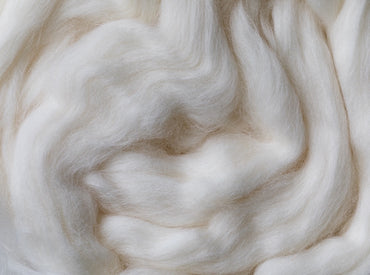Natural
Wool is a natural product that is shorn annually. It is naturally anti-microbial, wicks moisture, and regulates temperature - keeping you warm in winter and cool in summer.
Bedding choices can be a contributor to allergies, after all you likely spend between 7-9 hours with your sheets, pillow, and mattress. This guide will help you know what to look out for.
The way this guide is broken down is into two main categories. Primary allergens and secondary allergen factors. Primary allergens are things that actually cause allergies (down, dust mites, etc.) secondary allergens are the factors that could contribute to your allergies, like frequency you wash your bedding. The main components of bedding we’ll be considering are your pillows, sheets, comforters, and mattresses. All the secondary stuff you bring to bed like your pajamas and eye mask won’t be considered in this post.
Let’s start with the nastiest allergen first– dust mites. I did an indepth post on dust mites here, consult that if you want to do a deep dive into mites.
Dust mites are microscopic creatures that thrive in bedding and upholstered furniture, feeding on dead skin cells. So a bed, and bedroom is a perfect place for them. They can trigger allergies and asthma symptoms due to the allergenic waste particles they produce. You’ll often find dust mites in moist places. Synthetic materials like polyester, polyfoam (memory foam) provide an ideal breeding ground for dust mites and bacteria due to their structure and tendency to trap moisture. Natural materials like wool and down do better at preventing dust mites because they don’t build up as much moisture. This is also the reason high quality sports gear is made out of wool. Especially if you live in a warmer climate you should opt for moisture resistant pillows and bedding to prevent dust mites.
I know I just said that down is moisture resistant but some people have allergies to down itself. Down is derived from the soft under-feathers of ducks or geese (typically geese for high end pillows and bedding). Allergies to down can stem from the proteins present in the feathers, which can trigger allergic reactions in sensitive individuals. It’s a somewhat rare allergy, but some people do have down allergies. So if you have a down pillow or comforter in your room and are having an allergic reaction, consider trying out a different material for a few nights and see if it helps.
Lanolin, which is the oil on wool fibers, is a somewhat controversial allergen. Partially because Lanolin, is traditionally so well tolerated that it is used in creams that are used for rashes. Wool when used in clothes and pillows is also considered hyper allergenic. But there are some reported cases of people being allergic to Lanolin. For example, in this study that 1.7% of those tested among an allergy sensitive group were allergic to lanolin.
Synthetic materials used in bedding, such as polyester, can cause allergies in some individuals. Unfortunately the term “synthetic materials” is a bit of a catch all because I can’t go into all the materials that get added to bedding. The type of bedding I’m talking about is memory foam, artificial latex, artificial down, etc.These materials may contain chemical additives or irritants that can trigger allergic reactions. Additionally, synthetic materials may not be as breathable as natural fibers, leading to increased moisture build-up and potential dust mite infestation. Allergy-prone individuals should opt for bedding made from natural fibers like cotton or linen, which are less likely to cause allergic reactions. But there are more reasons than just allergies to not use synthetic materials (who really wants toxic materials on their pillows and bedding?). Another thing to watch out for in this category is natural materials that have been treated with synthetic chemicals, you might see this in the case of a flame retardant being used.
Let’s say that you don’t have any natural allergens in your room, or you aren’t allergic to any of the materials in your bedding. That’s great! But that doesn’t mean that allergens can’t get tracked in and start living on your sheets or pillows. So this part of our guide is to help you understand how to reduce outside allergens in the bedroom.
Humidity and Moisture Build-Up: Humidity and moisture build-up in bedding can contribute to allergies. Like I mentioned, dust mites thrive in warm and humid environments, so it's important to maintain proper ventilation and airflow in the bedroom. Use a dehumidifier, especially if you sleep in a basement in the south, in the summer. Wool pillows with a cotton cover aren’t going to be as hot as polyester ones, so opt for breathable pillow and sheet material.
This should go without saying but, regularly cleaning bedding is essential to avoid pollen build-up, which can trigger allergies. Wash sheets, pillowcases, and duvet covers in hot water (above 130°F) to effectively remove allergens. Check manufacture instructions for how you should wash. Vacuum the mattress and use dust mite-proof covers to minimize allergen accumulation. Additionally, frequently washing pillows and using hypoallergenic pillow protectors can help reduce exposure to allergens.
There are some other basic things to keep in mind. You don’t want your pets hanging out in your bedroom or on your bed. Even if you aren’t normally allergic to them, it might be a different story when you’re face to face with their hair all night on your pillow. Beyond allergies it’s worth looking into what other chemicals are in your pillows and bedding. Even if something doesn’t make you sneeze it could be bad for your long term health. A bit part of the reason the Woolshire exists is because there are so few pillows out there that don’t have chemical additives.

Wool is a natural product that is shorn annually. It is naturally anti-microbial, wicks moisture, and regulates temperature - keeping you warm in winter and cool in summer.

Wool is organic and completely biodegradable, making it an excellent material for sustainability.

Wool purifies the air by removing volatile organic compounds (VOCs) such as formaldehyde in the atmosphere.